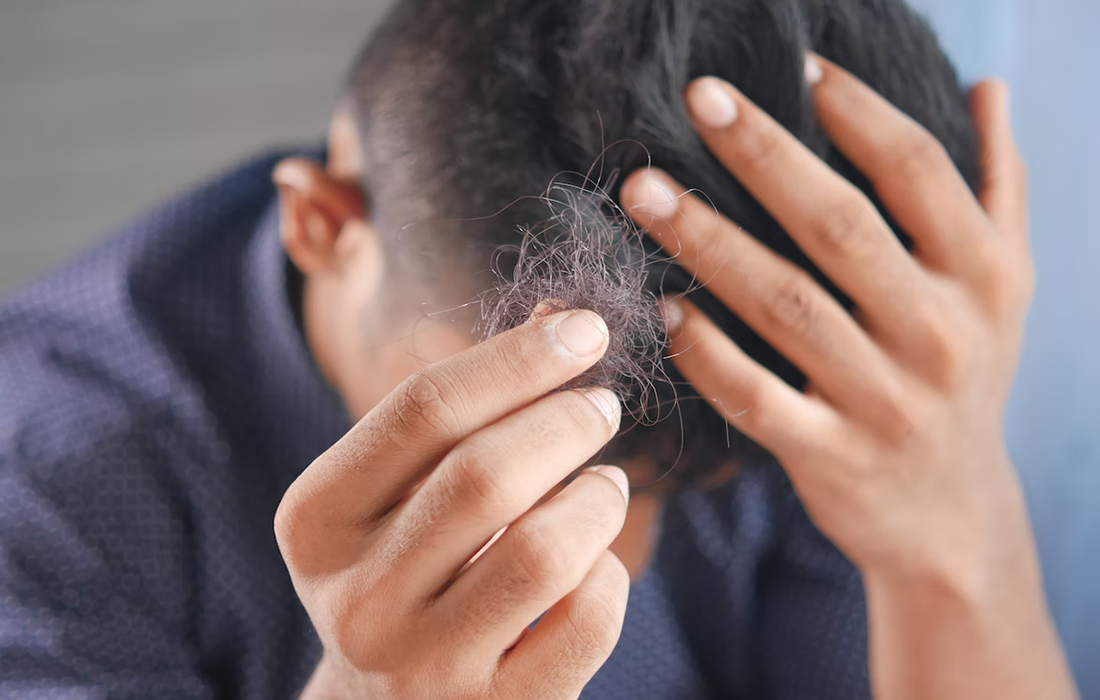Regenerative Medicine News and General Information
Discovering of New Signaling Molecule Stimulates Hair Growth
Hair loss (Alopecia ) occurs in more than 60% of men and in approximately 10% of women. Although a lack of scalp hair can potentially increase the risk of actinic damage and skin cancer, male and female pattern baldness are conditions that are, with few exceptions, treated electively.
For millions of individuals, hair loss is a major problem associated with loss of self-esteem, insecurity, and even depression. Hair loss can range from early thinning or hairline recession to complete loss of hair along the top and upper sides of the head.
There are many types of alopecia, the most common is Androgenic alopecia in both men and women.
One of the most rapidly growing segments of hair transplantation is hair transplantation in men and women. Surgical hair restoration was developed for and has traditionally been used in males. Newer techniques are more adaptable to females.
Currently, there are two medications on the market, finasteride and minoxidil, that are approved by the FDA for androgenetic alopecia. Finasteride is only approved for use in men. Both drugs are not universally effective and need to be taken daily to maintain their clinical effect.
Hair follicle stem cells are regulated by dermal papilla fibroblasts, their principal signaling niche. The production of activating molecules by the dermal papilla cells is critical for efficient hair growth in mice and humans. In people with androgenetic alopecia, dermal papilla cells malfunction, greatly reducing the normally abundant activating molecules.
New signaling molecule on papilla derma has been discovered
Maksim Plikus, Ph.D., UCI professor of developmental & cell biology and his team revealed that the SCUBE3 signaling molecule, which dermal papilla cells produce naturally, is the messenger used to ‘tell’ the neighboring hair stem cells to start dividing, which heralds the onset of new hair growth.
A mouse model with hyperactivated dermal papilla cells and excessive hair, which will facilitate more discoveries about hair growth regulation, was developed for this research.
They showed that in normal mouse skin, Scube3 is expressed only in dermal papillae of growing, but not in resting follicles. SCUBE3 protein microinjection is sufficient to induce new hair growth, and pharmacological TGF-β inhibition rescues mutant hair hyper-activation phenotype. Moreover, dermal-papilla-enriched expression of SCUBE3 and its growth-activating effect are partially conserved in human scalp hair follicles. Thus, Hedgehog regulates mesenchymal niche function in the hair follicle via SCUBE3/TGF-β mechanism. Basically inducing new growth in both the dormant human and surrounding mouse follicles.
These findings are very important for the need to develop new hair loss therapy that maintains in the long-term, especially for androgenic alopecia because there are just 2 medications that might help but have specific indications and the patients need to take it every day to maintain the effect. Further research is needed to create a new molecule medication SCUBE3.
SOURCE:
Yingzi Liu, Christian F. Guerrero-Juarez, Fei Xiao, Nitish Udupi Shettigar, Raul Ramos, Chen-Hsiang Kuan, Yuh-Charn Lin, Luis de Jesus Martinez Lomeli, Jung Min Park, Ji Won Oh, Ruiqi Liu, Sung-Jan Lin, Marco Tartaglia, Ruey-Bing Yang, Zhengquan Yu, Qing Nie, Ji Li, Maksim V. Plikus (jUNE 30, 2022) Hedgehog signaling reprograms hair follicle niche fibroblasts to a hyper-activated state. Developmental Cell: Retrieved from : https://www.cell.com/developmental-cell/fulltext/S1534-5807(22)00414-2?_returnURL=https%3A%2F%2Flinkinghub.elsevier.com%2Fretrieve%2Fpii%2FS1534580722004142%3Fshowall%3Dtrue#relatedArticles
IMAGE:
Photo by Towfiqu barbhuiya on Unsplash.

